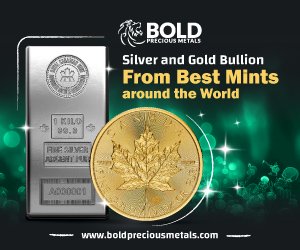Current Silver Coin Values
Determining the current price of silver coins is a straightforward process once you know the silver content of the coin and the current market price, often referred to as the silver spot price.
Current US Circulated Silver Coin Prices
Coin melt value refers to the intrinsic value of the precious metal contained within a coin. It's the value that a coin would have if it were melted down to recover the metal it contains. The melt value is primarily determined by the metal's weight and purity, and is calculated based on current market trading prices for the metal.
Many coins will have a specific weight and purity denoted on them. When dealing with circulated junk silver coins, most will be minted from an alloy that contains 90% pure silver. This high silver content gives them a significant intrinsic value based on the current spot price of silver.
Precious metals are measured in troy ounces. A troy ounce is different from the more common avoirdupois ounce that's used to measure most other goods in the U.S. There are roughly 28.35 grams in an avoirdupois ounce, but a troy ounce is roughly 31.1035 grams.
For example, consider a 1964 Kennedy half dollar was minted with 90% silver content and a gross weight of approximately 12.5 grams. To calculate the melt value of this coin, you simply multiply the silver weight times today's spot price. In this case, each pre-1965 half-dollar coin is minted with 0.3616959 troy ounces.
Beyond the silver content, pre-1965 coins may also have numismatic value for collectors. Certain key dates, mint marks, or conditions can make some of these coins worth even more than their intrinsic silver value. It's important to note that melt value doesn't take into account the numismatic or collector value that a coin might have. Collectible coins may be worth more than their melt value due to factors such as rarity, historical significance, condition, and demand from collectors. Visiting a local coin shop in your area is a good idea if you have questions about numismatics.
Precious metals like silver have historically been seen as a store of value and a hedge against inflation. This is because pre-1965 coins are made of silver, many investors and collectors view them as a tangible asset that can preserve wealth over time.
Melt value can be a useful concept for those interested in precious metals as a form of investment or for those who want to know the minimum value of the metal content in their coins. However, for collectors or coins with significant historical or numismatic value, melt value is just one of many factors to consider when determining their overall worth.
| Description | Face Value | ASW | Silver Melt Value Per Coin |
Per $1 Face Vale | Per Bank Roll | |
|---|---|---|---|---|---|---|
| Nickel | 1942-1945 "War Nickel" | $0.05 | 0.0563 | $1.53 | $30.69 | $61.39 |
| Roosevelt Dime | 1946-1954 Roosevelt Dime | $0.10 | 0.0855 | $2.33 | $23.31 | $116.54 |
| Mercury Dime | 1916-1945 Mercury Dime | $0.10 | 0.0855 | $2.33 | $23.31 | $46.61 |
| Barber Dime | 1892-1916 Barber Dime | $0.10 | 0.0855 | $2.33 | $23.31 | $46.61 |
| Washington Quarter | 1932-1964 Washington Quarter | $0.25 | 0.17875 | $4.87 | $19.49 | $194.91 |
| Standing Liberty Quarter | 1916-1930 Standing Liberty Quarter | $0.25 | 0.17875 | $4.87 | $19.49 | $194.91 |
| Barber Quarter | 1892-1916 Barber Quarter | $0.25 | 0.17875 | $4.87 | $19.49 | $194.91 |
| 40% Kennedy Half Dollar | 1965-1970 Kennedy Half Dollar | $0.50 | 0.147893 | $4.03 | $8.06 | $80.63 |
| 90% Kennedy Half Dollar | 1964 Kennedy Half Dollar | $0.50 | 0.3616959 | $9.86 | $19.72 | $197.20 |
| Franklin Half Dollar | 1948-1963 Franklin Half Dollar | $0.50 | 0.3616959 | $9.86 | $19.72 | $197.20 |
| Walking Liberty Half Dollar | 1916-1947 Walking Liberty Half Dollar | $0.50 | 0.3616959 | $9.86 | $19.72 | $197.20 |
| Barber Half Dollar | 1892-1915 Barber Half Dollar | $0.50 | 0.3616959 | $9.86 | $19.72 | $197.20 |
| 40% Eisenhower Dollar | 1971-1976 Eisenhower Silver Dollar | $1.00 | 0.3161 | $8.62 | $8.62 | $86.17 |
| Peace Dollar | 1921-1935 Peace Dollar | $1.00 | 0.77345051 | $21.08 | $21.08 | $210.84 |
| Morgan Dollar | 1878-1904 & 1921 Morgan Dollar | $1.00 | 0.77345051 | $21.08 | $21.08 | $210.84 |
Understanding the Melt Value of Coins
Knowing the melt value of your precious metals investment is important for several reasons, but primarily, because it represents the actual worth of the metal itself, irrespective of any numismatic or collector value a coin or bar might have. It's the value you would receive from a refiner if you were to melt down the item.
By understanding the melt value, buyers can ensure they are not paying excessively over the intrinsic value for precious metals, unless they deem other factors are worth the additional premium. Melt value calculations require accurate information about the metal's purity and weight. This can help you ensure that the precious metal you're buying is as advertised and not counterfeit.
If your primary goal is to invest in precious metals, knowing the melt value allows you to assess the potential for profit or loss in your investment. You can track the market price of the metal and make informed decisions about buying or selling based on changes in price.
When considering different forms of precious metals (e.g., coins vs. bars), knowing the melt value helps you compare them on an equal basis. For instance, you can compare the premium (the amount over melt value) you're paying for a coin to determine if it's a better or worse investment than a bar. Precious metals investors often track the melt value of their holdings to gauge the overall performance of their investment portfolio.
Knowing the melt value of your stack is important when it comes time to sell your precious metals because it will give you a clear idea of the minimum value you should accept. It can serve as a reference point and can help you negotiate a fair price with buyers or dealers.
It's particularly crucial when dealing with bullion coins. Collector or numismatic coins derive much of their value from factors other than their melt value, such as rarity and historical significance. Knowing the melt value can help you distinguish between bullion and collector coins.









